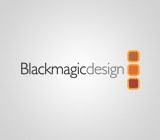|
|
Forum List
>
Café LA
>
Topic
OT: Solved: The mathematics of the Hollywood blockbuster
Posted by Ben King
|
OT: Solved: The mathematics of the Hollywood blockbuster February 20, 2010 07:42AM |
Admin Registered: 18 years ago Posts: 3,512 |
[www.newscientist.com]
...I've been using the rhythm technique for years

For instant answers to more than one hundred common FCP questions, check out the LAFCPUG FAQ Wiki here : [www.lafcpug.org]
...I've been using the rhythm technique for years


For instant answers to more than one hundred common FCP questions, check out the LAFCPUG FAQ Wiki here : [www.lafcpug.org]
|
Re: OT: Solved: The mathematics of the Hollywood blockbuster February 20, 2010 08:50AM |
Moderator Registered: 16 years ago Posts: 3,410 |
I'm fairly confident that nobody involved in that article has ever read "In the Blink of an Eye." I mean, come on, guys. Of course shots in films cut away with the audience's attention on them starts to waver. That's 'cause the editor cut away when his attention started to waver! That whole article is just a lacquer of mathematics poured messily over the dawning realization that editors actually pay attention while they're working.


|
Re: OT: Solved: The mathematics of the Hollywood blockbuster February 20, 2010 09:49AM |
Moderator Registered: 18 years ago Posts: 10,771 |
The article also showed a stunning lack of understanding of what actually constitutes rhythm. Look at Seven Samurai or GoodFellas. It's not just the length of a cut that determines rhythm. It's also whether new elements enter a shot, the context of the drama or action, the proximity to the subjects, the lighting, the dialogue, the quality of the performance, the position of the scene relative to the overall film...I guarantee the audience's attention span was not wavering during that mammoth tracking shot (over three minutes, if I remember right) into the bedroom when Jean-Hugues Anglade and Beatrice Dalle looked like they were having real-time sex in the beginning of 37°2 le Matin (Betty Blue).

www.derekmok.com

www.derekmok.com
|
Re: OT: Solved: The mathematics of the Hollywood blockbuster February 20, 2010 12:21PM |
Moderator Registered: 17 years ago Posts: 8,836 |
>It's not just the length of a cut that determines rhythm.
That's an excellent point, Derek. Many people tend to think that the rhythm is determined by the shot size and speed of cuts. But there is so much more to it, and the acting and the story takes precedence over the intention of the editor.

www.strypesinpost.com
That's an excellent point, Derek. Many people tend to think that the rhythm is determined by the shot size and speed of cuts. But there is so much more to it, and the acting and the story takes precedence over the intention of the editor.

www.strypesinpost.com
|
Re: OT: Solved: The mathematics of the Hollywood blockbuster February 20, 2010 01:11PM |
Registered: 18 years ago Posts: 2,528 |
I remember attending a demo for some film management software at the San Francisco Apple Store, and the presenter mentioned that the "ideal time for any shot is three seconds." A bunch of us traded puzzled looks.
Holy cow. I think my job is safe!
- Loren
Today's FCP 7 keytip:
Invoke Big Timecode window with Control-T!
Your Final Cut Studio KeyGuide? Power Pack.
Now available at KeyGuide Central.
www.neotrondesign.com
Holy cow. I think my job is safe!
- Loren
Today's FCP 7 keytip:
Invoke Big Timecode window with Control-T!
Your Final Cut Studio KeyGuide? Power Pack.
Now available at KeyGuide Central.
www.neotrondesign.com
|
Re: OT: Solved: The mathematics of the Hollywood blockbuster February 20, 2010 01:24PM |
Registered: 18 years ago Posts: 1,384 |
Nevertheless, attention spans are getting shorter, and the speed of editing is increasing.
Special effects are getting more and more bizarre and the editor has to cut before it becomes obvious it's a model, etc. In the last James Bond movie the cutting was too fast for me. The new martial arts movies are also too fast -- the cutting that is; I can hardly see anything anymore.
The action scenes in war movies or battle scenes are so fast these days that it's hard to see who the bad guys and who the good guys are (of course that's another phenomenon:-) screen directions are all messed up too.
However, Ben brings up an interesting subject -- the article; there has been scientific studies about the phenomena of motion pictures from the beginning -- it's always been a lot of science involved ... a lot of money is involved. So of course it's going to be studied.
I don't know, I find it interesting that an editor can set up a pattern of shots, say 4 seconds each, and play around with the pattern of repetition and attention span management (I'm not trying to coin a term here, just musing ... and amusing myself:-)
Thanks, Ben, for stirring things up a bit.LOL
Special effects are getting more and more bizarre and the editor has to cut before it becomes obvious it's a model, etc. In the last James Bond movie the cutting was too fast for me. The new martial arts movies are also too fast -- the cutting that is; I can hardly see anything anymore.
The action scenes in war movies or battle scenes are so fast these days that it's hard to see who the bad guys and who the good guys are (of course that's another phenomenon:-) screen directions are all messed up too.
However, Ben brings up an interesting subject -- the article; there has been scientific studies about the phenomena of motion pictures from the beginning -- it's always been a lot of science involved ... a lot of money is involved. So of course it's going to be studied.
I don't know, I find it interesting that an editor can set up a pattern of shots, say 4 seconds each, and play around with the pattern of repetition and attention span management (I'm not trying to coin a term here, just musing ... and amusing myself:-)
Thanks, Ben, for stirring things up a bit.LOL
|
Re: OT: Solved: The mathematics of the Hollywood blockbuster February 20, 2010 01:44PM |
Moderator Registered: 16 years ago Posts: 3,410 |
Quote
Nevertheless, attention spans are getting shorter, and the speed of editing is increasing.
I keep hearing this repeated, and I don't buy it for a second. The advent of computerized editing has certainly made it more practical to have ninety or a hundred cuts per minute, and it's not hard to find examples of that. But even in slam-bang action sequences where you'd expect this "theory" to hold up the best, the evidence for it just isn't there.
Look at the big battle sequence from "Avatar," to name one example. Start at about 2:15 into that film and watch closely. You'll see shots that are between one and a half and five seconds pretty consistently. Now, you can say that James Cameron's number-one claim to fame is his almost supernatural ability to film action, but the same is true of the very different "District 9," which also had some pretty fast-paced action sequences but was edited with restraint.
You look at a movie like "The Hurt Locker," and it feels faster paced than it really is, because the camera's always moving. But the more the tension ratcheted up, the more suspenseful it was ? and god, was it suspenseful; my whole body ached after I saw that one just from being so tense for so long ? the slower the editing pace became.
Then you look at films like "Moon" or "Inglorious Basterds" and find that they're practically languorous by comparison.
Yes, there are movies like "Star Trek" out there that push too hard ? I even took issue with "Sherlock Holmes" a bit, but forgave it because like "Star Trek" it was just too much fun to hate. But overall? No, sorry. I don't buy it. The whole thing smacks of get-off-my-lawnism.

|
Re: OT: Solved: The mathematics of the Hollywood blockbuster February 20, 2010 05:53PM |
Registered: 16 years ago Posts: 108 |
|
Re: OT: Solved: The mathematics of the Hollywood blockbuster February 21, 2010 01:10AM |
Moderator Registered: 18 years ago Posts: 10,771 |
> You look at a movie like "The Hurt Locker," and it feels faster paced than it really is,
Or watch John Woo's martial-arts classic, Last Hurrah for Chilvalry. Something like 120 sword strokes traded in one shot (according to fight choreographer Fung Hak-on), and not a close-up, either -- a wide, so that you can see the physical relationship of the combatants. Blazingly fast-paced, but deceptively few cuts. The performers were so good that the camera didn't need to mess with anything.

www.derekmok.com
Or watch John Woo's martial-arts classic, Last Hurrah for Chilvalry. Something like 120 sword strokes traded in one shot (according to fight choreographer Fung Hak-on), and not a close-up, either -- a wide, so that you can see the physical relationship of the combatants. Blazingly fast-paced, but deceptively few cuts. The performers were so good that the camera didn't need to mess with anything.

www.derekmok.com
|
Re: OT: Solved: The mathematics of the Hollywood blockbuster February 22, 2010 04:37AM |
Moderator Registered: 18 years ago Posts: 7,458 |
|
Re: OT: Solved: The mathematics of the Hollywood blockbuster February 22, 2010 07:50AM |
Registered: 16 years ago Posts: 128 |
Sorry, only registered users may post in this forum.



 All the news now and in your digital future
All the news now and in your digital future
